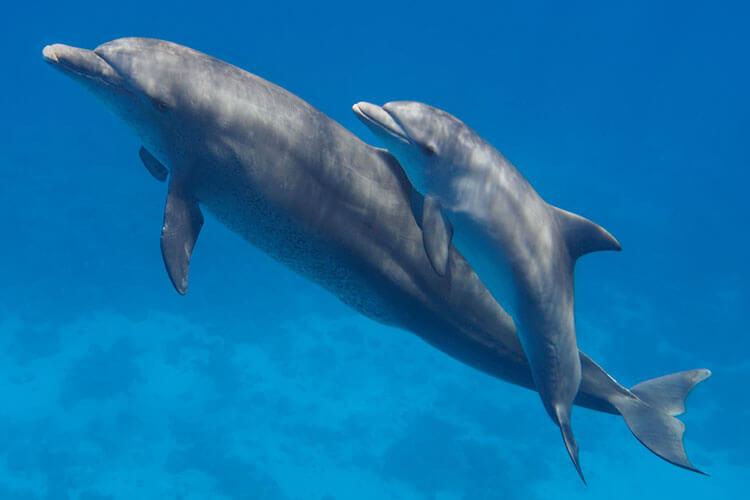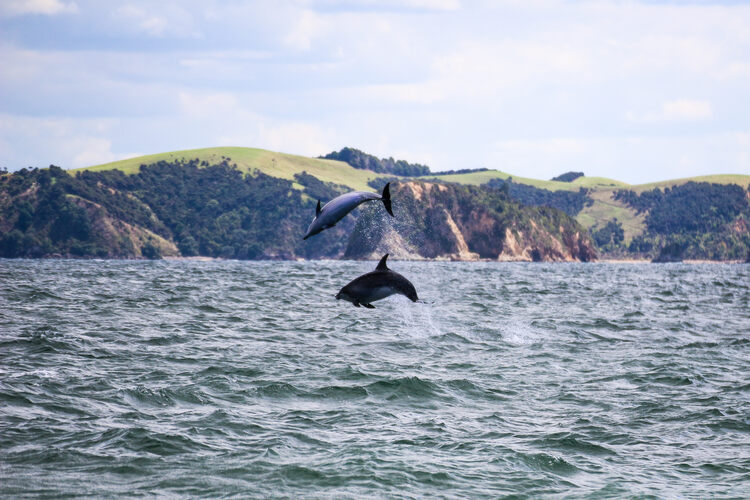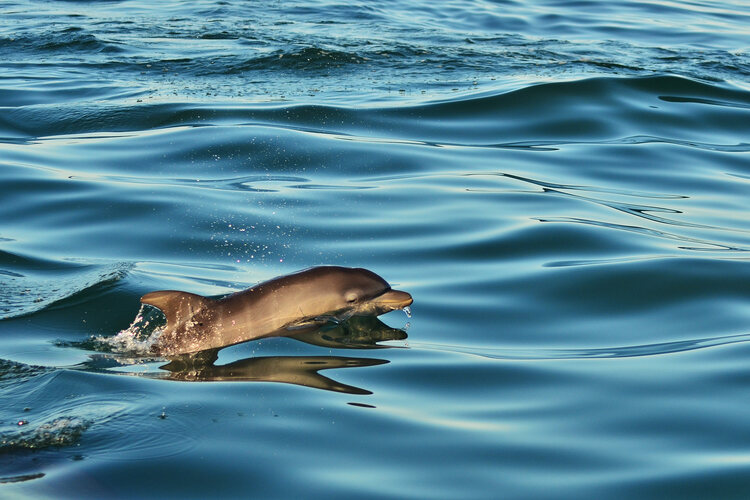
Female bottlenose dolphins modify signature whistles to communicate with their calves, similar to humans using ‘baby talk’ with newborns
A new study shows female bottlenose dolphins modify their vocalisations to communicate with their calves – a behaviour universal in human caregivers as ‘baby talk’, or ‘motherese’ – but a pattern sparsely evidenced among non-human species.
Published in PNAS, the study found that female bottlenose dolphins increased the maximum frequency and frequency range of their signature whistles – making them both higher in pitch and with a broader range of tones – in the presence of their own dependent calves, compared to when not being with them.
Researchers analysed recordings made of the female bottlenose dolphins – chosen due to their parallels with humans for long-term mother-offspring bonds and capability for vocal learning – during brief catch-and-release events of wild bottlenose dolphins in waters near Sarasota Bay, Florida, United States.
Related articles

For more than three decades, scientists repeatedly placed special microphones on 19 wild dolphin mothers to record their whistles – both when they had calves and when they didn’t. On average, dolphin calves stay with their mothers for three years in Sarasota.
The differences in the signature whistles in the presence versus absence of calves aligned with the higher fundamental frequencies and wider pitch ranges that are seen in human child-directed communication (CDC).
‘That was true for every one of the mums in the study, all 19 of them,’ said biologist Peter Tyack, a study co-author from the University of St. Andrews in Scotland.
These signature whistles, which are used by dolphins to identify one another, are able to be remembered by dolphins for decades. Apart from humans, no other creature is believed to use given names to identify one another.
Dolphins do not use another dolphin’s signature whistle to communicate – instead, they repeat their own signature whistle, waiting for another dolphin to respond with their own in order to identify it.
The study supports the convergent evolution of ‘motherese’ or CDC in bottlenose dolphins, providing data to support evidence that dolphins provide a useful animal model for studying the evolution of vocal learning and language, as they can communicate with their calves in this way.
Similarly to human children, the use of ‘motherese’ observed in dolphins may function to enhance bonding, attention and vocal learning in dolphin calves.

Dolphin intelligence
The recent study of dolphins utilising ‘baby talk’ is another example of their level of sophistication. Dolphins, alongside whales, are widely understood to possess behaviour and physiological features that are consistent with an intelligent mind.
Research has shown that dolphins can use syntax and grammar in their vocalisations, combining various sounds in order to convey new meanings and complex information.
They also have the second largest brain-to-body ratio after humans, with an area of their brain dedicated entirely to echolocation. This allows the cetaceans to use sonar to ‘see’, from hunting and navigating in dark waters to eavesdropping on the echolocating clicks of other dolphins to understand what they are looking at.
Their brains contain spindle neurons, specialised cells associated with advanced abilities such as reasoning, perceiving, problem-solving, communicating and understanding.
‘A dolphin alone is not really a dolphin; being a dolphin means being embedded in a complex social network…even more so than with humans,’ explains neuro-expert Lori Mariano.
Dolphins also use exceptionally smart ways of finding and catching prey, such as utilising sea-sponges to disturb fish in the seabed to eat them. These sea-sponges act as gloves for the dolphins, protecting them from injury on their noses as they forage for food.
Bottlenose dolphins in Shark Bay, Australia, carry conch shells in their mouths when fishing, rising to the surface to drain the shell of water and leaving small fish trapped in the bottom. These dolphins are then able to flick their head to obtain the fish inside.
The physical capabilities of dolphins
Dolphins often engage in behaviour that is recognised as play, such as riding waves alongside surfers, racing towards boats to surf in the bow wave or tumble, back flip and spin in their pods. In Hawaii, bottlenose dolphins and humpback whales have been filmed playing together, where the dolphins swim onto the nose of the whales and then slide down their heads.

In Florida Bay in the US, dolphins can swim up to 20 miles an hour in order to quickly circle schools of mullet fish. This rapid motion stirs up mud that causes the fish to leap from the water, straight into the dolphins’ mouths.
Certain schools of dolphins have even been known to help an injured dolphin up to the water’s surface.
Dolphins are also highly self-aware – when viewing themselves in a mirror, dolphins can recognise their own reflection from an astonishing seven months old, around five months before human children can do the same. They are able to examine parts of their bodies that they can’t normally see, such as their mouths, and twirl around in unusual ways when looking in a mirror.
Individual dolphins have also been observed to display examples of individual social learning and knowledge transfer. In the 1980s, Billie the dolphin was rescued after becoming trapped in a sea lock. After rehabilitation in captivity for three weeks, she was released.
But upon returning to the sea, Billie was observed to be tail-walking, a trick often taught in marine parks for rewards, that she must have observed despite the fact that she was not directly trained in this way during rehabilitation. She went on to teach this trick to other dolphins, displaying remarkable intelligence both individually and in transferring this knowledge.


